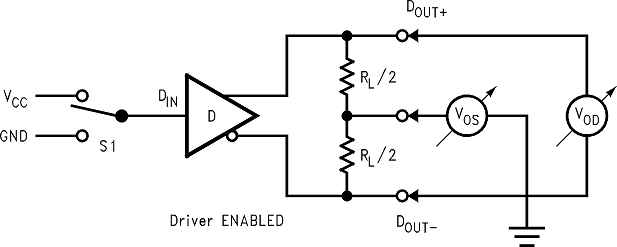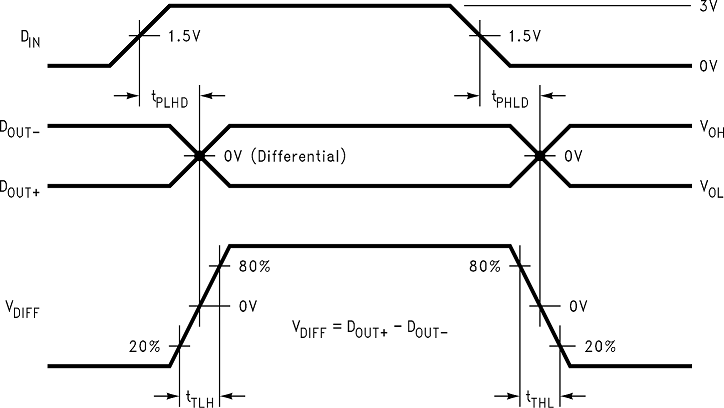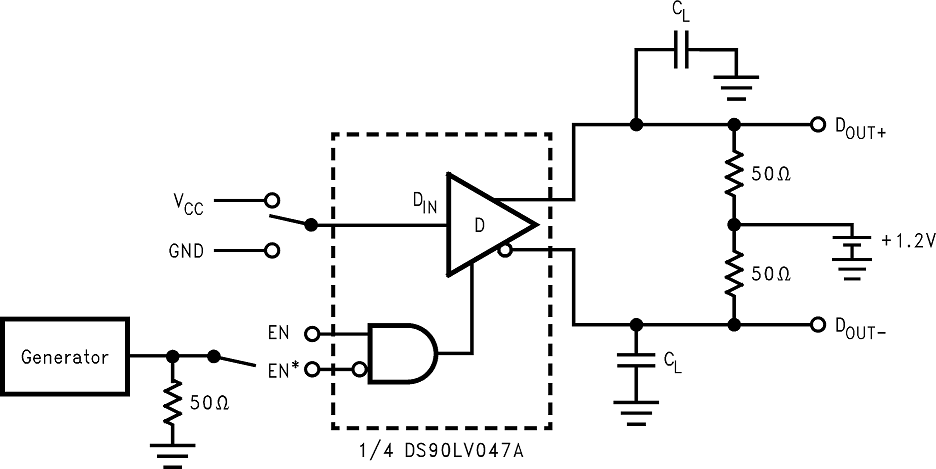SNLS044D May 2000 – July 2016 DS90LV047A
PRODUCTION DATA.
- 1 Features
- 2 Applications
- 3 Description
- 4 Revision History
- 5 Pin Configuration and Functions
- 6 Specifications
- 7 Parameter Measurement Information
- 8 Detailed Description
- 9 Application and Implementation
- 10Power Supply Recommendations
- 11Layout
- 12Device and Documentation Support
- 13Mechanical, Packaging, and Orderable Information
7 Parameter Measurement Information
 Figure 17. Driver VOD and VOS Test Circuit
Figure 17. Driver VOD and VOS Test Circuit
 Figure 18. Driver Propagation Delay and Transition Time Test Circuit
Figure 18. Driver Propagation Delay and Transition Time Test Circuit
 Figure 19. Driver Propagation Delay and Transition Time Waveforms
Figure 19. Driver Propagation Delay and Transition Time Waveforms
 Figure 20. Driver TRI-STATE Delay Test Circuit
Figure 20. Driver TRI-STATE Delay Test Circuit
 Figure 21. Driver TRI-STATE Delay Waveform
Figure 21. Driver TRI-STATE Delay Waveform